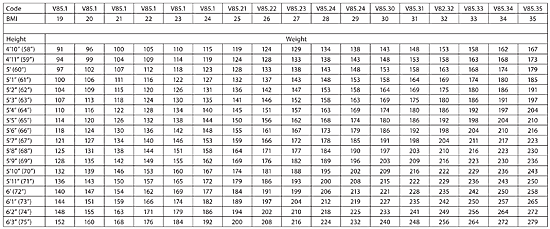
You’ve got until Oct. 1 to weed out incorrect codes.
Fam Pract Manag. 2005;12(8):49-50

It is almost autumn in Kansas, and the corn continues to grow in some fields. The fall harvest is still a few weeks off. However, the farmers in my area will tell you that what happens now will determine the harvest’s outcome.
Physician practices must think in the same way. The ICD-9 updates have been released, making this a good time to review your superbills for needed revisions. Doing this work now could save you the time and trouble of correcting and resubmitting claims that are denied because of out-of-date diagnosis codes.
What to remove
The following diagnosis codes will be invalid after Oct. 1, when they will be replaced by more specific ICD-9 codes:
276.5 Volume depletion,
287.3 Primary thrombocytopenia,
567.2 Other suppurative peritonitis,
567.8 Other specified peritonitis,
585 Chronic renal failure,
599.6 Urinary obstruction, unspecified,
770.1 Meconium aspiration syndrome,
799.0 Asphyxia,
996.4 Mechanical complication internal orthopedic device, implant and graft,
V12.6 Personal history of disease of the respiratory system,
V17.8 Family history of other musculoskeletal disease,
V26.3 Procreative management, genetic counseling and testing,
V58.1 Encounter for chemotherapy,
V64.0 Vaccination not carried out because of contraindication.
Revised descriptors
Some codes will have their descriptors changed. Beginning Oct. 1, codes for hypertension will use the word “kidney” rather than “renal” and “chronic kidney disease” rather then “renal failure.” Code 728.87 will be “Muscle weakness, generalized.” Several sleep disturbance codes (780.5X) will include “unspecified” in the descriptors.
What to add
Many new diagnosis codes have been added. Among the new codes most pertinent to family medicine are three for reporting volume depletion:
276.50 Volume depletion, unspecified,
276.51 Dehydration,
276.52 Hypovolemia.
Code 278.02 has been added to identify a patient who is overweight, and V codes that identify the body mass index of patients over 20 years old are also now available. A table that links the individual codes to the body mass index is included below.
BMI TABLE WITH ICD-9 V-CODE CROSS-REFERENCE

Other new V codes define more specifically the reasons vaccinations are not carried out. These five-digit codes take the place of V64.0:
V64.00 Unspecified reason,
V64.01 Because of acute illness,
V64.02 Because of chronic illness or condition,
V64.03 Because of immune compromised state,
V64.04 Because of allergy to vaccine or component,
V64.05 Because of refusal of caregiver,
V64.06 Because of patient refusal,
V64.07 For religious reasons,
V64.08 Because patient had disease being vaccinated against,
V64.09 For other reason.
Other new codes to note as you review the entire list are those relating to thrombocytopenia; sleep disorders including insomnia, hypersomnia and apnea; Long QT syndrome; erythromelalgia; fetal conditions including meconium passage during delivery, aspirations and staining; and other excessive crying. Category 799 has been replaced with 799.01 for asphyxia and 799.02 for hypoxemia. Many new codes have been added to indicate personal and family histories, most notably history of fall, V15.88. Finally, V62.84 is added for reporting suicidal ideation (which I hope you did not experience at the thought of code changes).
A complete list of these ICD-9 changes is available on the Family Practice Management Web site (see “ICD-9 Coding Tools”). Sow these code changes into your coding practice, and you should be ready to harvest the reimbursements in October.
ICD-9 CODING TOOLS
FPM’s ICD-9 coding references have been updated to comply with the ICD-9 codes that take effect Oct. 1.
The short list
You’ll find “ICD-9 Codes for Family Medicine: The Short List” at https://www.aafp.org/fpm/icd9. This list of about 600 codes commonly used in family medicine was developed by Donald Spencer, MD, MBA, and Allen Daugird, MD, MBA, family physicians and clinical associate professors at the University of North Carolina, Chapel Hill, and Philip S. Whitecar, MD, assistant professor of family medicine at Wright State University, Dayton, Ohio.
The long list
Drs. Whitecar, Spencer and Daugird have also updated “ICD-9 Codes for Family Medicine: The Long List,” a list of about 1,500 codes that you can find online at https://www.aafp.org/fpm/icd9.
The most common codes
The authors again this year have identified 100 ICD-9 codes that are especially common in family medicine. They are preceded by arrows in both lists.